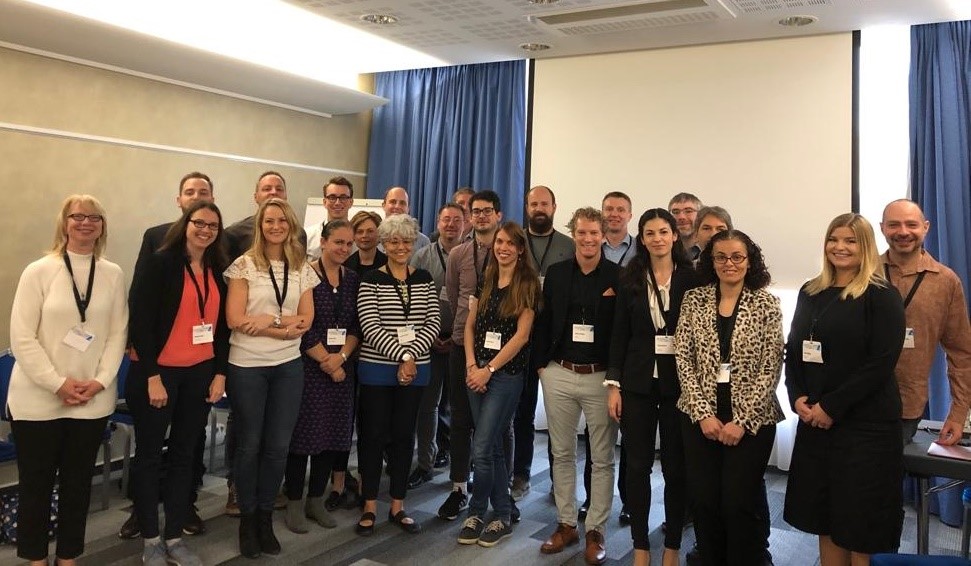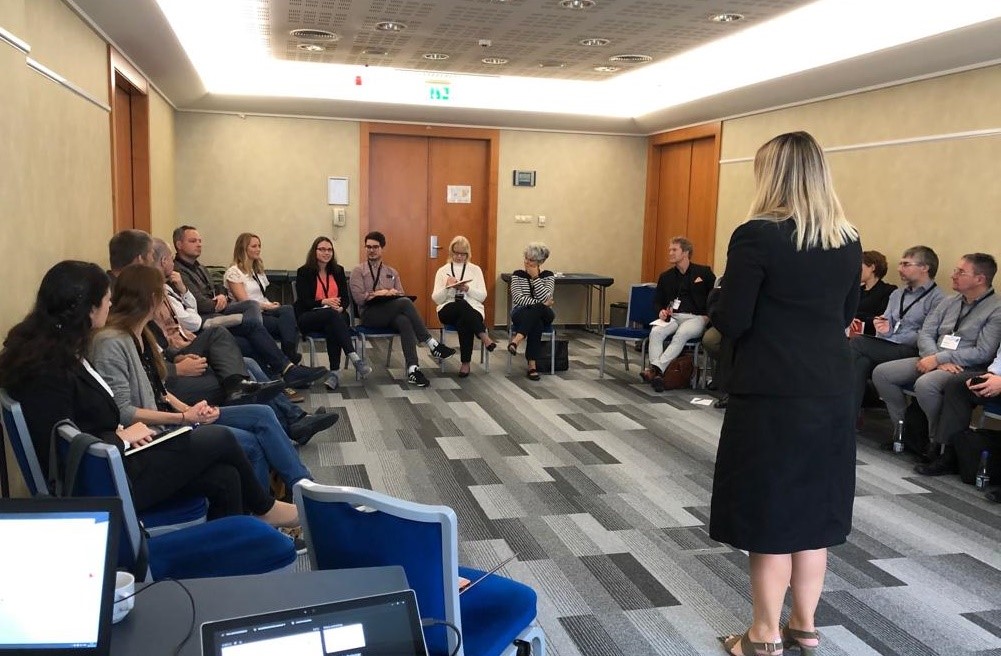Clinical applications and quality assurance of surface guided radiation therapy (SGRT) (in collaboration with the American Association of Physicists in Medicine (AAPM))-PDF Version
Budapest, Hungary, 26-27 October 2019
Chairs:
- Vania Batista, Department for Radiation Oncology and Radiation Therapy, Heidelberg University Hospital, Heidelberg, Germany
- Hania Al-Hallaq, Department of Radiation & Cellular Oncology, University of Chicago, Chicago, US; also chair of American Association of Physicists in Medicine TG-302 on surface image guided radiotherapy
We were privileged to come together in Budapest, Hungary, for two days of discussion on this topic with the aim of bringing together clinical medical physicists, researchers, and vendors working with surface image-guided technologies, to discuss the main tasks and issues associated with the clinical introduction of surface guided radiation therapy (SGRT).
We began by getting to know each other: the 12 attendees from eight countries explained their experience with SGRT and their goals in attending the workshop. Then we moved into five separate sessions over two days in which each speaker – Dr. Vania Batista, Dr. Miguel de la Casa (medical physicist, HM Sanchinarro ·University Hospital, Spain), Dr. Christoph Bert (medical physicist, Erlangen University Hospital, Germany), Malin Kügele (medical physicist, Sk°ane University Hospital and Lund University, Sweden), and Dr Al-Hallaq - motivated the discussions with short introduction talks. Vendor representatives also gave pitches on the second day and actively participated in the discussions. We were happy that all SGRT vendors were represented: Ben Waghorn/Torsten Moser attended from Vision RT, Mattias Nilsing from C-RAD, Luisa Schuetzenmeister / Gerrit Hombrink (Brainlab), and Lisa Hampton/James Turner (Varian).
Given the lack of specific recommendations on SGRT to date, we began by discussing various approaches to quality assurance (QA) and commissioning, and the establishment of clinical workflows. Then we discussed research avenues including potential improvements to the clinical SGRT systems. Finally, we focused on staff training and the use of SGRT as a safety and quality tool. We acknowledged that, as early adopters of SGRT technology, we faced challenges in implementation, such as training staff to use the systems and the lack of consensus on clinical implementation. We agreed that a QA programme should match clinical implementation and could be rolled out in phases, but we felt that we might not have all the necessary tools. We discussed promising research topics such as the potential use of SGRT data to develop motion models, to track plan robustness, or to automate certain clinical workflow decisions. For example, SGRT generates a large amount of data that could be used to trigger re-planning, or to automate selection of regions-of-interest and/or thresholds. Moreover, we realised that SGRT is an important safety tool, but we may have to demonstrate its value in this arena.
From our discussions, the following recommendations emerged:
- We suggested recommendations to vendors that systems should provide the ability to save patient surface data, and tools for analysis of data (e.g. process control) or system performance (i.e. latency).
- We would like to create an ESTRO working group focused on SGRT that includes all stakeholders.
- We believe that an SGRT workshop/course focused on training everyday users (Radiotherapy technologists, RTTs) would be very beneficial in helping the field to embrace SGRT fully.
We also found time to have a little fun. On the first day, we performed a speed networking task in which participants rotated among five tables to discuss sub-topics, each of which was anchored by a single attendee. On Friday night after the ESTRO networking event, a group of us explored Budapest.
In summary, we found it refreshing to spend time “thinking outside the box” as our keynote speaker, Robert Jeraj, asked us to do. Our group was well balanced with new and experienced users, and everyone chimed into the discussion. We believe that we have a lot in common as early adopters of SGRT and we can work together to publish and advance the use of this technology.

Group picture of the participants and vendors’ representatives at the SGRT workshop

Round-table discussion about the topic “Overcoming the learning curve” led by Malin Kügele

Vania Batista
Heidelberg University Hospital
Heidelberg, Germany

Hania Al-Hallaq
Department of Radiation & Cellular Oncology
University of Chicago
Chicago, U.S.A